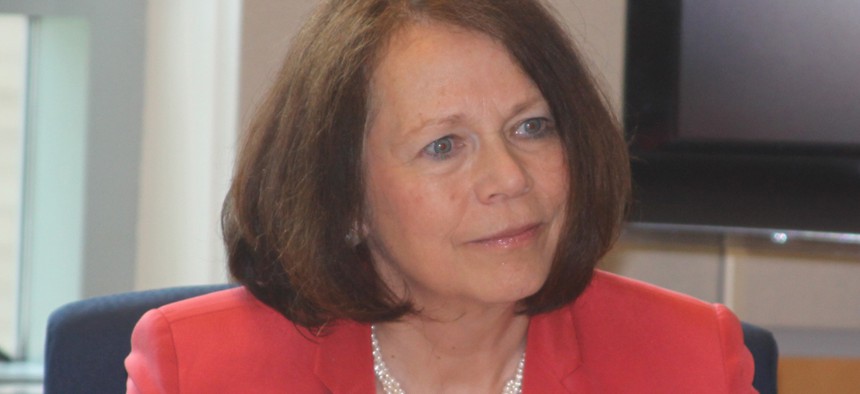Energy to Spend Millions on Improving Arms Control Verification Methods

"Developing the R&D expertise of tomorrow can take years to cultivate," NNSA Deputy Administrator for Defense Nuclear Nonproliferation Anne Harrington. NNSA
A consortium of universities will investigate geophysical models for aiding in the confirmation of underground atomic explosions.
The U.S. Energy Department has awarded a multimillion-dollar research grant to explore new technologies for verifying foreign nonproliferation commitments.
A consortium of universities will use the $25 million grant by the department's National Nuclear Security Administration over the next half-decade to investigate, among other things, geophysical models for aiding in the confirmation of underground atomic explosions. Research will also look into methods for verifying that nations are not illicitly diverting nuclear materials toward weapons programs, according to an NNSA news release.
Another goal of the research initiative is to prepare a new generation of scientists for careers in the nonproliferation field, said NNSA Deputy Administrator for Defense Nuclear Nonproliferation Anne Harrington.
"Developing the R&D expertise of tomorrow can take years to cultivate," she said in a released statement. "But we are linking national laboratories and academia by funding the next generation of researchers to perform complex research and gain understanding of technical challenges in the areas of major importance for the nuclear nonproliferation mission."
The University of Michigan is leading the group of 13 academic institutions, which will be working with a group of national laboratories on the various projects.
Some researchers will be investigating new technologies aimed at determining whether the quantity and concentration of an atomic-energy site's nuclear materials actually match the figures declared by the facility to the International Atomic Energy Agency, according to a University of Michigan press release. Developing new verification methods could enable IAEA inspectors to no longer carry out the lengthy and expensive process of opening up sites' nuclear-material storage containers.
Other scientists are to work on a project focused on confirming that nations are turning atomic warhead material into civilian reactor fuel, and are not processing other, less sensitive materials into fuel as a means of evading their disarmament commitments.
"In Russia, the Megatons to Megawatts program converted hundreds of metric tons from warheads into nuclear fuel used in the U.S.," Sara Pozzi, a University of Michigan associate professor of nuclear engineering and radiological sciences, said in provided comments. "In these scenarios, again, we need tools to verify that what is being turned into fuel is indeed a nuclear warhead and not some other form of nuclear material."






